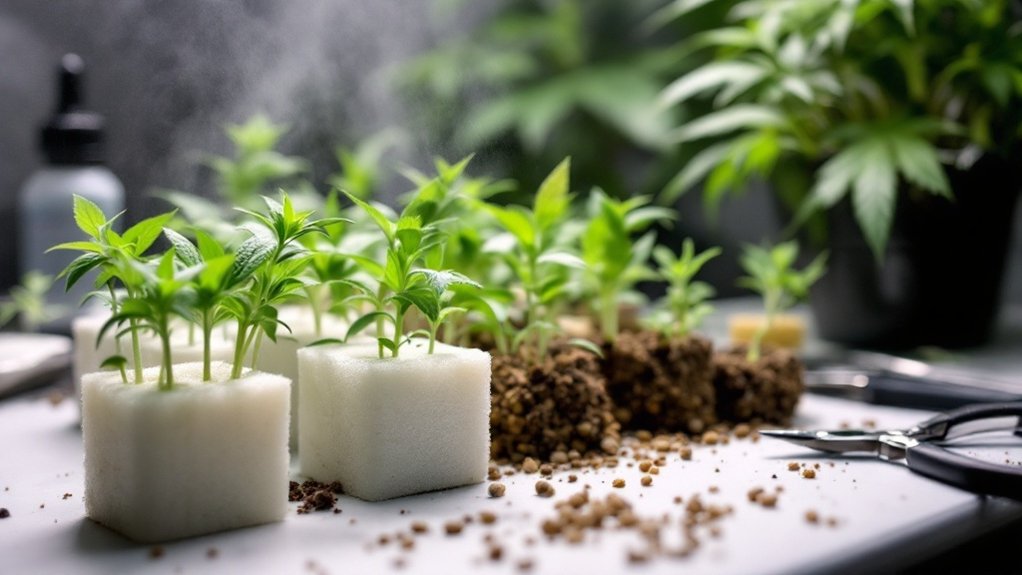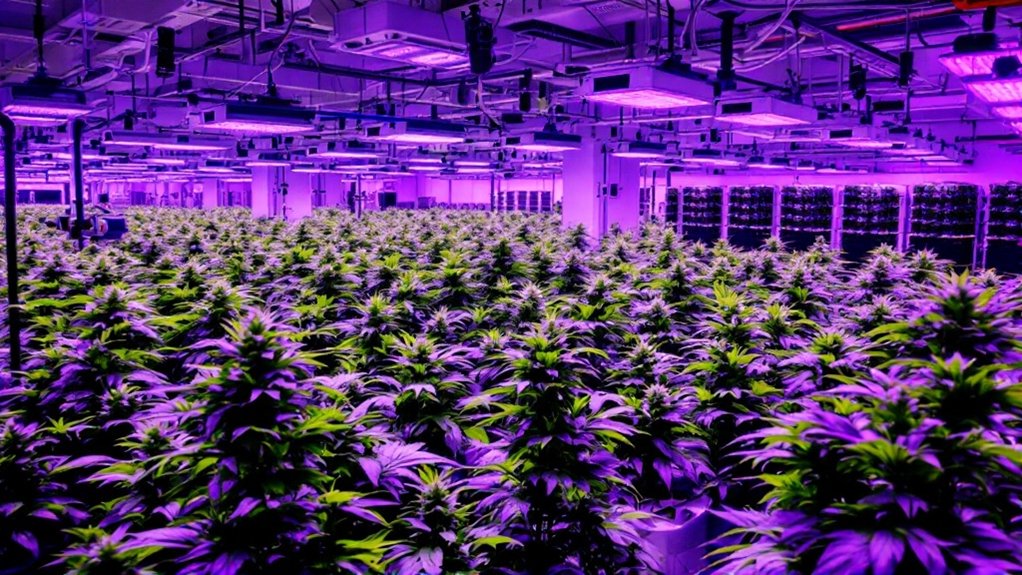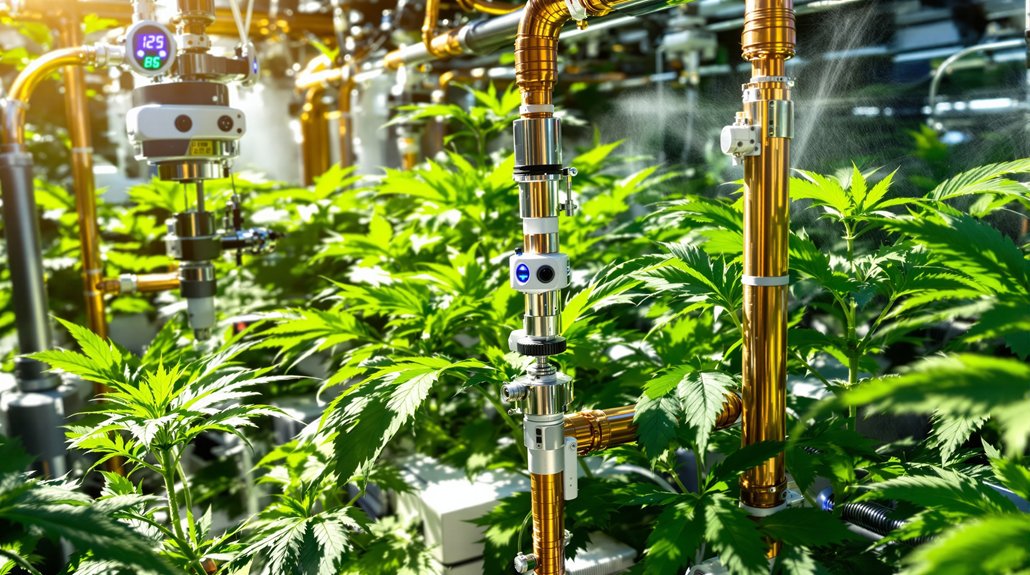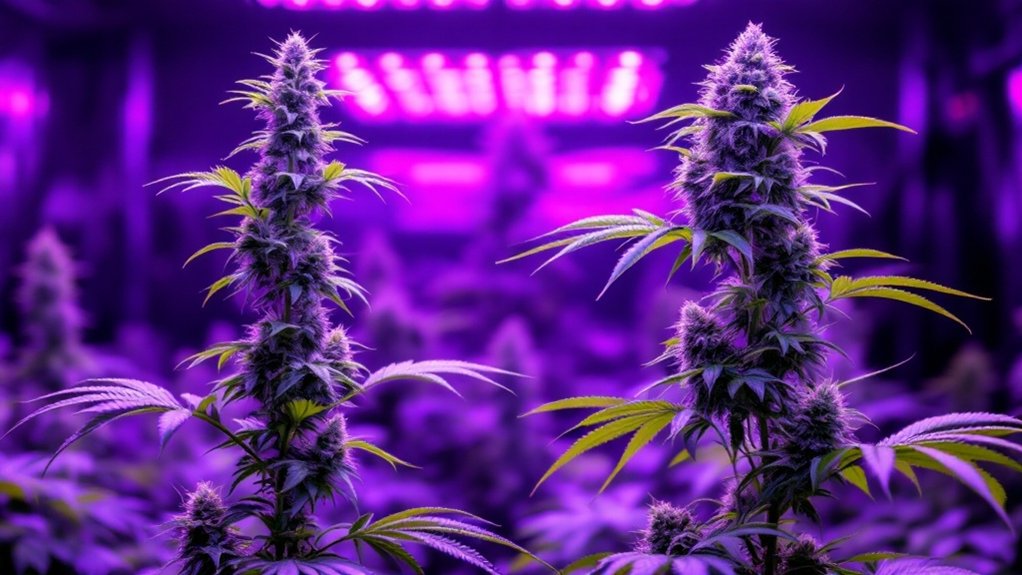Cannabis propagation occurs through several effective methods. Seeds provide genetic diversity, while cloning creates identical plants from mother plant cuttings, reducing growth time. Air layering develops roots on stems still attached to the plant, yielding robust clones. Tissue culture enables rapid multiplication under sterile conditions, minimizing disease transmission. Environmental factors greatly impact success: temperatures of 70-75°F (21-24°C), high humidity, and sterile tools prevent infections. These techniques vary in complexity but offer growers multiple pathways to establish healthy cannabis plants.
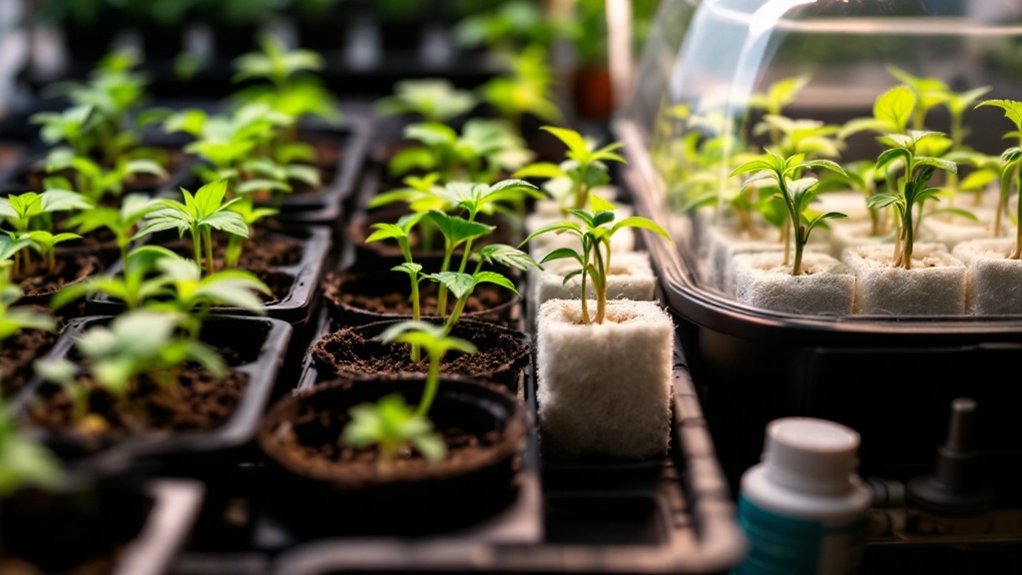
While cannabis cultivation has become increasingly mainstream, successful propagation remains a fundamental skill for both hobbyist and commercial growers. The art of cannabis propagation encompasses several distinct methods, each offering unique advantages for developing healthy, productive plants.
Seeds provide essential genetic diversity, enabling cultivators to develop new strains with unique phenotypes and characteristics. Proper seed selection critically impacts success rates, with mature, viable seeds yielding considerably better results than immature specimens. Many growers employ germination stations to enhance temperature and humidity, resulting in faster, more uniform sprouting compared to direct planting methods. Providing optimal light distribution during this stage further supports healthy seedling growth.
Genetic diversity from quality seeds unlocks breeding potential, while controlled germination environments significantly improve success rates and uniformity.
Cloning represents another basic propagation technique, involving taking cuttings from mother plants to maintain genetic consistency. This method typically produces mature plants more rapidly than seed propagation, effectively reducing crop cycle time. High humidity levels and stable temperatures create essential conditions for successful root development and minimal clone mortality.
Healthy, disease-free mother plants remain a prerequisite for ideal cloning outcomes, while rooting hormones often accelerate and enhance root formation on fresh cuttings. Experienced growers generally select mother plants that demonstrate robust growth patterns and desirable traits for propagation.
Air layering offers an alternative approach for cultivars that root poorly from traditional cuttings. This technique encourages root growth on stems still attached to the mother plant, which are later separated once roots develop sufficiently. The process involves carefully wounding the stem, applying rooting hormone, and wrapping the area in moist medium. Growers can obtain larger, more robust clones through air layering compared to standard cutting methods.
Advanced propagation techniques include tissue culture and grafting. Tissue culture involves growing plants from small tissue samples under sterile laboratory conditions, enabling rapid multiplication of disease-free clones with uniform traits. This method considerably reduces pathogen transmission risk compared to traditional cloning approaches.
Grafting combines different cannabis strains onto a single rootstock, potentially creating multi-strain plants or improving overall vigor and resilience.
Environmental factors play vital roles in all propagation methods. Ideal temperature ranges, high humidity levels, and appropriate lighting prevent desiccation in young plants. For optimal development, maintaining temperatures between 70-75°F (21-24°C) helps establish ideal conditions for both seeds and clones throughout the propagation process. Clean, sterile tools and media minimize infection risks during these vulnerable growth stages.
Proper rooting media should provide balanced aeration and moisture retention, with rockwool, coco coir, and peat serving as common options. Cultivators must also maintain appropriate airflow to reduce mold development while supporting healthy development of newly propagated cannabis plants.
Frequently Asked Questions
How Long Does It Take for Cannabis Cuttings to Root?
Cannabis cuttings typically develop roots within 5-7 days under ideal conditions, though this timeline varies based on several factors.
Most cuttings show white root development within 14-21 days when proper care is maintained.
Environmental conditions greatly impact this process; dry environments may force faster rooting in 4-5 days, while higher humidity can delay root formation.
Strain genetics, cutting preparation techniques, and the use of rooting hormones all influence the speed of root development.
Can I Clone Autoflowering Cannabis Strains Successfully?
While technically possible, cloning autoflowering cannabis strains is generally ineffective and not recommended.
Autoflowers possess genetically-determined lifespans, and clones inherit the same biological age as their donor plants. The short vegetative phase gives cuttings insufficient time to establish robust root systems before flowering begins.
Success rates remain notably lower than with photoperiod varieties, typically yielding smaller plants with reduced harvests. For consistent results with autoflowering genetics, starting from seeds provides considerably better outcomes than attempting to clone.
What Are the Signs of Successful Cannabis Root Development?
Successful cannabis root development is characterized by bright white roots with occasional tan tints and numerous branching structures.
Healthy roots appear fibrous with visible root hairs indicating active nutrient absorption.
Plants with well-developed roots demonstrate consistent growth patterns, increased water uptake, and resilience when gently tugged.
As roots mature, they reach drainage holes while maintaining firm texture.
Conversely, brown, slimy roots or circular root patterns suggest problems that require immediate attention.
Is Tissue Culture Propagation Suitable for Home Growers?
Tissue culture propagation presents significant challenges for home growers despite its advantages.
While it allows for disease-free plant production and genetic preservation in limited space, the method requires specialized equipment, sterile techniques, and ongoing investment in consumables.
The steep learning curve, higher initial costs, and precision requirements make traditional cloning methods more practical for most hobbyists.
Those with experience in sterile techniques may find tissue culture more accessible, but conventional propagation remains dominant for home cultivation.
Why Do My Cannabis Clones Develop Yellow Leaves?
Cannabis clone yellowing commonly occurs during normal root development as plants redirect nutrients from leaves to establish new roots.
Environmental stressors like improper humidity levels, temperature extremes, or light intensity issues can exacerbate this condition.
Water management problems, including overwatering that causes oxygen deprivation in the root zone, often trigger yellowing.
Additionally, pH imbalances outside the ideal 6.0-6.5 range hinder nutrient uptake, while deficiencies in nitrogen, magnesium, or iron typically manifest with distinctive yellowing patterns.
